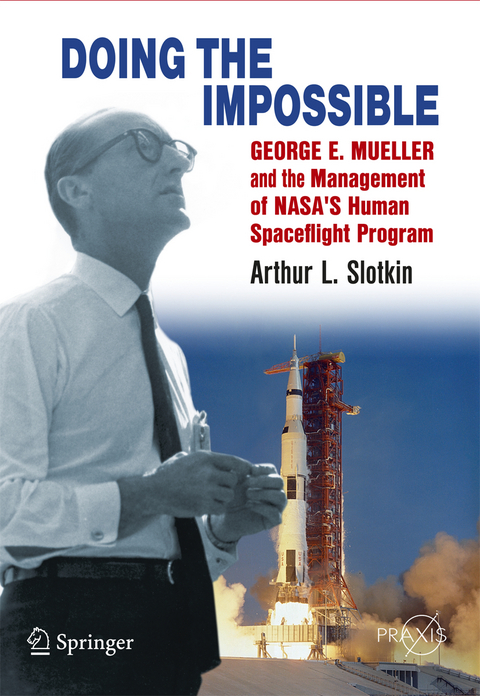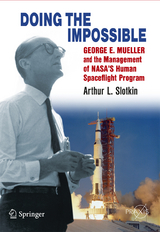Doing the Impossible
Springer-Verlag New York Inc.
978-1-4614-3700-0 (ISBN)
Following the contributions of George E. Mueller, in this unique book Arthur L. Slotkin answers such questions as: exactly how did the methods developed for use in the Air Force ballistic missile programs get modified and used in the Apollo Program? How did George E. Mueller, with the help of others, manage the Apollo Program? How did NASA centers, coming from federal agencies with cultures of their own, adapt to the new structured approach imposed from Washington?
George E. Mueller is the ideal central character for this book. He was instrumental in the creation of Apollo extension systems leading to Apollo, the Shuttle, and today’s ISS and thus was a pivotal figure in early American human spaceflight history.
With degrees in aerospace engineering, Arthur L. Slotkin worked for the AIAA and wrote about the space program In the early 1970s. Joining the System Development Corporation he assisted George E. Mueller and continued to support him after Mueller’s retirement in 1983. After a 30 year career in the computer software and services industry, Slotkin earned another graduate degree in the history of technology and spent the last eight years researching and writing this book. The ideas and innovations Mueller brought to NASA from the Air Force ballistic missile program are highlighted.
Illustrations.- Tables.- Foreword.- Acknowledgments.- Introduction.- Chapter 1: Reorganizing.- Chapter 2: Program management.- Chapter 3: Getting Ready.- Chapter 4: Resuming Flight.- Chapter 5: Learning, developing, and planning.- Chapter 6: Peaks and valleys.- Chapter 7: Recovery.- Chapter 8: All-up testing.- Chapter 9: Orbiting the Moon.- Chapter 10: A railroad in space.- Epilogue.- Bibliography.- Abbreviations.- Index.
| Reihe/Serie | Space Exploration | Springer Praxis Books |
|---|---|
| Zusatzinfo | 9 Illustrations, color; 11 Illustrations, black and white; XXV, 306 p. 20 illus., 9 illus. in color. |
| Verlagsort | New York, NY |
| Sprache | englisch |
| Maße | 168 x 240 mm |
| Themenwelt | Sachbuch/Ratgeber ► Natur / Technik ► Weltraum / Astronomie |
| Naturwissenschaften ► Physik / Astronomie ► Astronomie / Astrophysik | |
| Technik ► Fahrzeugbau / Schiffbau | |
| Technik ► Luft- / Raumfahrttechnik | |
| ISBN-10 | 1-4614-3700-8 / 1461437008 |
| ISBN-13 | 978-1-4614-3700-0 / 9781461437000 |
| Zustand | Neuware |
| Haben Sie eine Frage zum Produkt? |
aus dem Bereich




